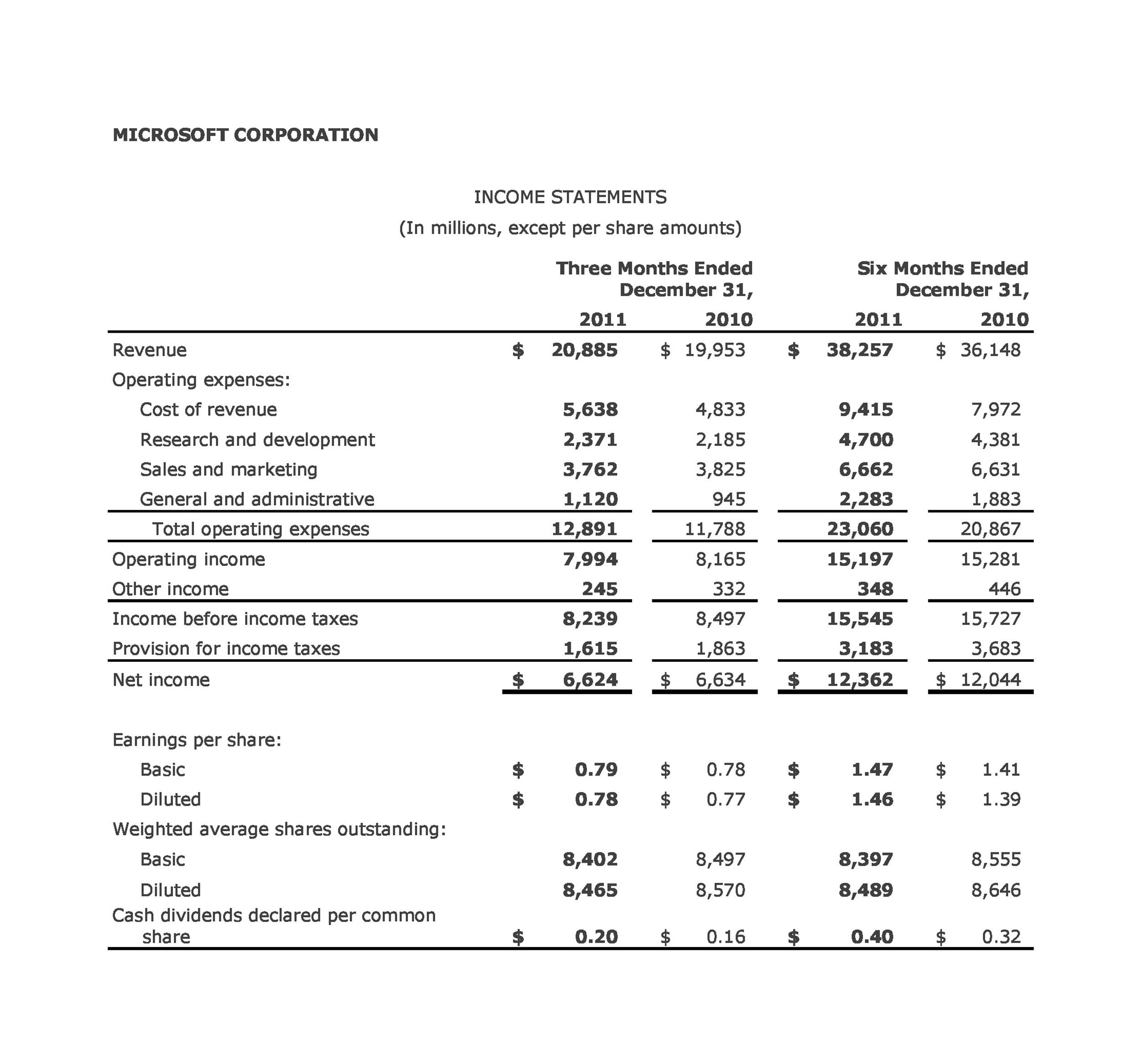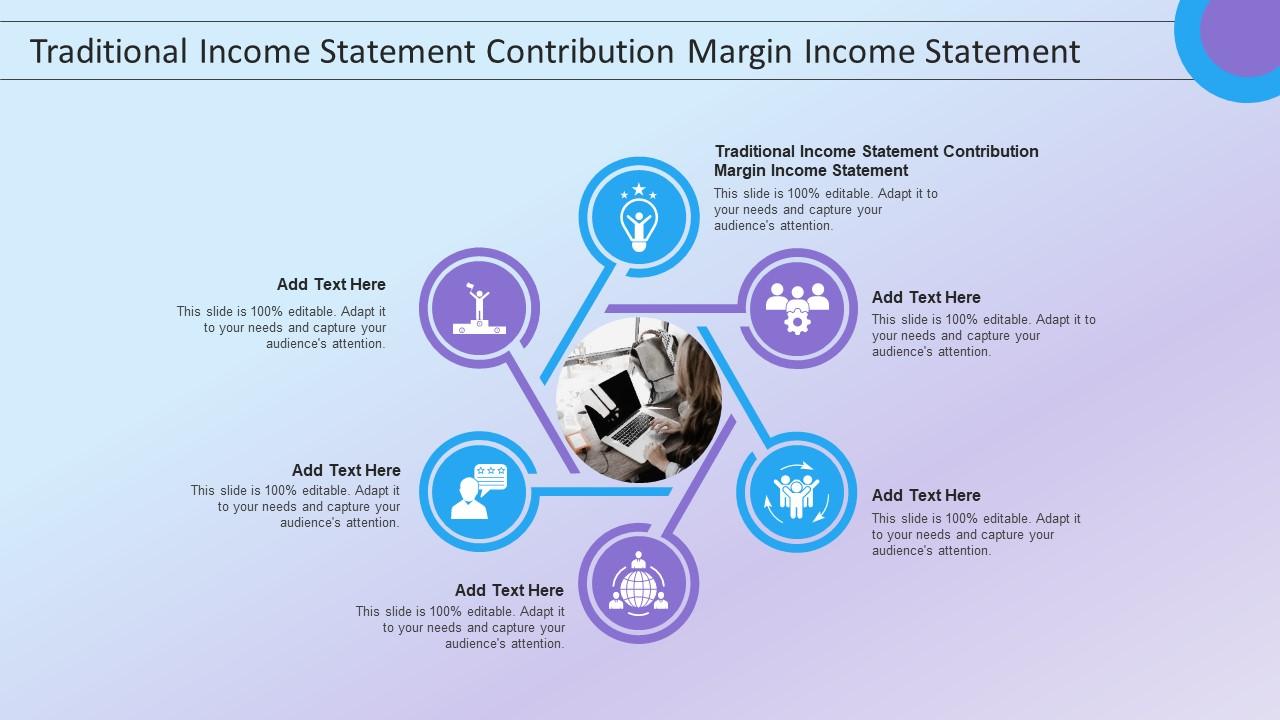Traditional Income Statement All You Need Hall Accounting Company

But multi-step income statements are great for small businesses with several income streams. Many small businesses need financial statements to apply for credit or to provide financial information to a potential lender. Using an income statement to demonstrate a consistent history of income and profitability can make this process easier. Last but not least, calculate the operating income by subtracting selling and administrative expenses from gross profit.
- It tells whether a company has made a profit or loss during that period.
- This number may fluctuate each period, depending on how many units were sold.
- The report ends with a total that shows the final result, either a gain or a loss.
- To prepare an income statement, small businesses must analyze and report their revenues, operating expenses, and the resulting gross profit or losses for a specific reporting period.
- Your revenue includes all the money earned for your services during the reporting period, even if you haven’t yet received all the payments.
Limitations of Financial Statements and Their Impacts

Appvizer provides you with a glossary to clarify these concepts and help you manage your business with peace of mind. A traditional income statement is key to learning more about a company and how well it is performing. Jason Ding is a seasoned accountant with over 15 years of progressive experience in senior finance and accounting across multiple industries. Jason holds a BBA from Simon Fraser University and is a designated CPA.
How is traditional income statement different from other types of income statements?
It also pinpoints which parts you need to modify to reduce spending and increase your earnings. An income statement should be used in conjunction with the other two financial statements. It is also practical to use this format when you do not need to separate operating expenses from the cost of sales.
Pros and Cons of Using Traditional Income Statements
It’s very much the same as checking the bank balance at the end of each month and wondering whether you’ve saved each month or lost money. It demonstrates your company’s financial health so investors can easily gauge and assess your business profitability and growth potential. The income statement serves as a tool to understand the profitability of your business. The income statement can also help you make decisions about your spending and overall management of business operations.
So, you subtract $20 from the gross profit, leaving a net income of $40. Finally, the bottom line—the result of subtracting all expenses, interest, and taxes from a company’s revenues. Also known as a company’s “bottom line,” net profit is the total profit a business has earned after subtracting total expenses from total revenue. Commonly referred to as COGS, this is how much it cost to produce all the goods or services that were sold during the reporting period. If a company is a service business, this might be referred to as Cost of Sales. For company executives, the value of income statements is that can shed light on what changes they may need to make to keep the company growing competitively.
Write your cost formula and plug in the number of units sold for the activity. This detailed examination of Company XYZ’s income statement allows stakeholders to gauge the efficiency of its revenue generation, expense management, and overall profitability. It also aids in identifying trends and patterns that can influence strategic decision-making. The balance sheet example template format analysis explanation differs from a Contribution Margin Income Statement in both format and calculations, impacting the interpretation and analysis of the financial data presented.
If you prepare the income statement for a particular business line or segment, you should limit revenue to products or services that fall under that umbrella. A monthly report, for example, details a shorter period, making it easier to apply tactical adjustments that affect the next month’s business activities. A quarterly or annual report, on the other hand, provides analysis from a higher level, which can help identify trends over the long term. Your reporting period is the specific timeframe the income statement covers.
It is imperative to recognize the implications for stakeholders who rely on financial statements for decision-making purposes. Evaluating gross and net profit margins provides crucial information on the financial health and overall efficiency, guiding businesses in making informed strategic and operational decisions. If you run a service-based business, your income statements will be even easier to create. Because you do not produce a product, you don’t have any Costs of Goods Sold.
All of these can collectively serve as a whole new perspective — a holistic angle — to help with your smarter and better budgeting, investment and strategic planning. If you don’t know the difference between GAAP and IFRS, you can’t read a set of financials when comparing businesses globally. It is an extremely important statement in relation to the owners’ stake.
Imagine running a business without knowledge of where the money is coming from or where it’s going. Financial statements make us accountable to the community and to our operations. Reading these reports on a regular basis helps us understand how to focus our resources, budget more correctly, and create realistic targets. With 1 in 5 businesses failing in its first year (1), you need a guide in your financial planning. Having a precise income statement lets you set clear business objectives because it offers complete revenue and expense information.
The traditional income statement is one of three key financial statements, along with the balance sheet and cash-flow statement, prepared regularly by companies, usually each quarter and year. Once you calculate gross profit, you can subtract those SG&A expenses to calculate operating income. This is the amount the business has available in working capital once all expenses are paid.
